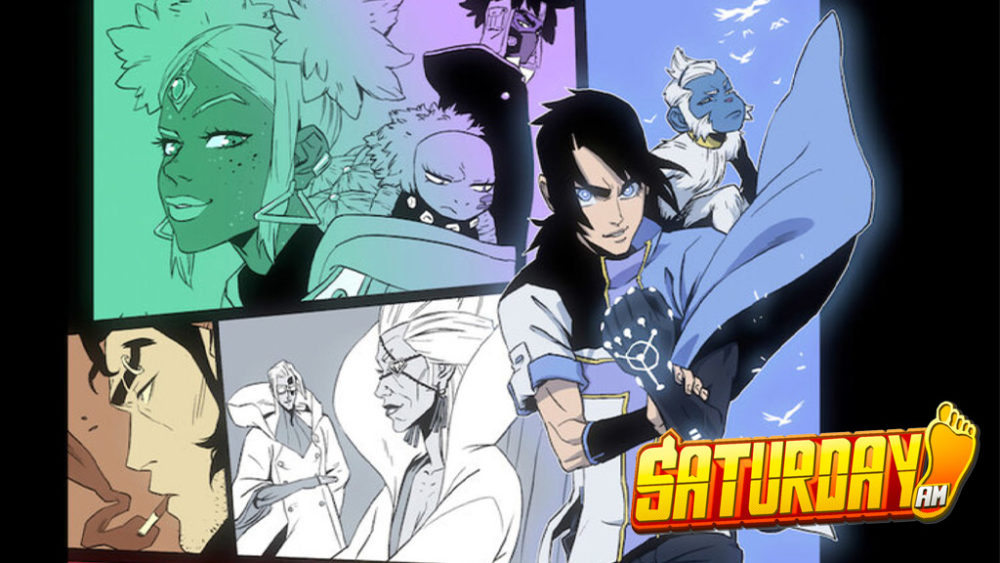
Only within the digital pages of Saturday AM will you find the first Black female lead character in a Shonen manga, AND a manga series illustrated by an artist from Nigeria.
Launched in 2013, the digital, bi-weekly magazine Saturday AM is full of the compelling characters, creative plotlines, and distinctive visual art that you find in most published comic books. The difference? The content is also packed with diverse characters, imagined and brought to life by a set of equally diverse creators.
The Power of Representation
Frederick L. Jones founded Saturday AM, which gets its name from the beloved era of Saturday morning cartoons. Jones previously spent more than a decade working as an executive in the video game industry, where he worked on projects ranging from the games themselves to toys and trading cards. But, as a Black man, he often found that he was one of the few people of color in meetings.
Jones was also a lifelong fan of manga and comic books and as his career led him to travel more and more, he was surprised to find how global their popularity had become. He personally became a fan of the genre, as he explains it, “by accident,” at a time when anime and manga weren’t as readily available in the U.S. The combination of seeing an artform he loved become a major cultural touchstone and his desire for more representation within the industry led him to create Saturday AM.
“Intellectual property is such a powerful tool toward representation because if you see yourself then you begin to believe in the possibilities,” he says. “Furthermore, if someone else sees someone different from them in a heroic role then they stop assuming the worst about someone who’s gay, or someone who’s of color, or women, or whatever.”
“Intellectual property is such a powerful tool toward representation because if you see yourself then you begin to believe in the possibilities.”
As Jones points out, anime and manga don’t have the best track record for diversity, and he believes ignorance is a root cause. Although Japanese people create Japanese content, he explains, when they think of marketing the content “globally,” it is primarily made with the U.S. or the UK in mind. For example, most anime voice actors are white.
“If these characters are Asian, you’d think most of the voice actors would be Asian,” he says.
They don’t have to talk in an accent, that would be silly. But at the same time, why aren’t there more Asian actors portraying what are supposed to be Asian characters?
This representation issue, he also notes, isn’t limited to race — he applies the same theories to the way different genders, sexual orientations, and cultures are traditionally portrayed in comic books and manga. “Why do we have to portray heroic female characters as having a gigantic chest?” he asks. “Again, it comes down to representation.”
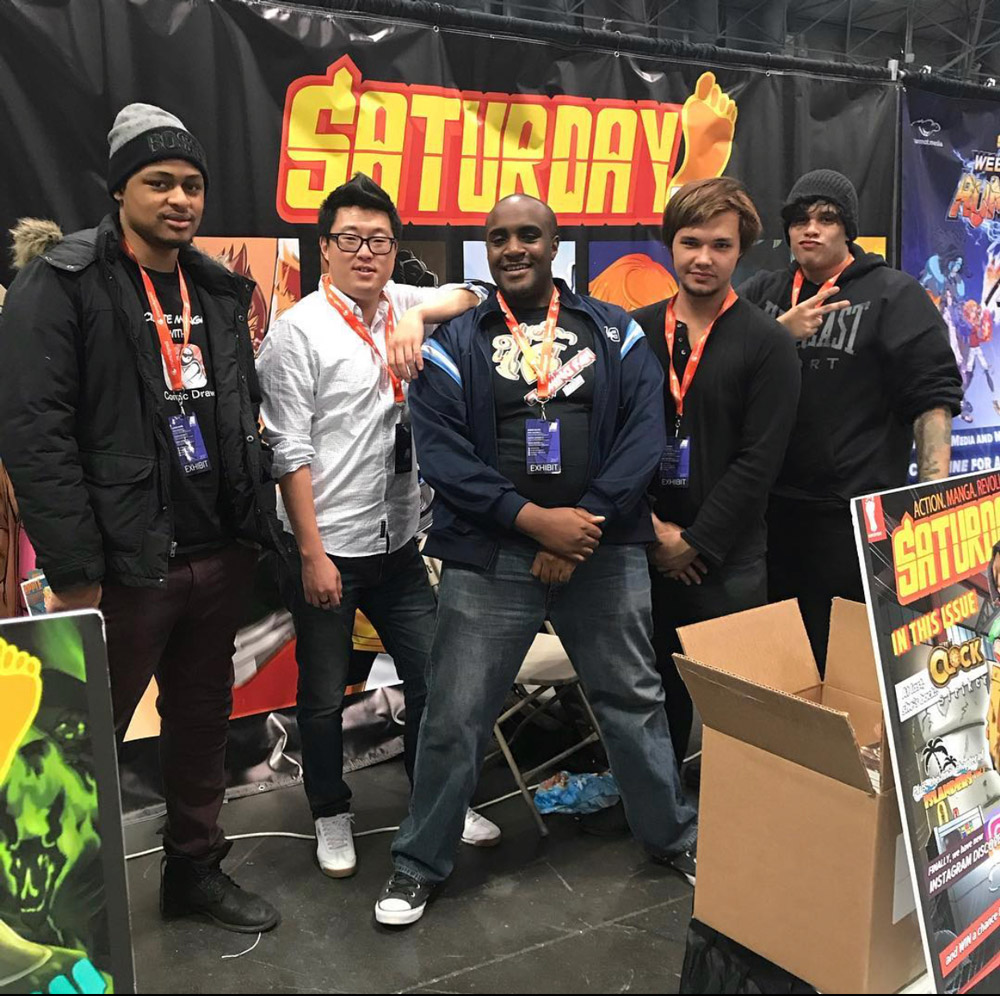
While Saturday AM has been producing diverse content for 8 years, with Jones and his team doing incredible work to increase representation and encourage conversations about these topics, he notes that the current state of the world — specifically as we live through the COVID-19 pandemic and this summer’s wave of social justice protests — make this conversation especially relevant.
“I don’t think the best comic writer, or novel or science fiction writer could have dreamed of this moment. We have a plague that is the perfect plague,” he says. “[COVID-19] can attach itself to people, kill them over time, never reveal itself, and it thrives in proximity. Through that we have exposed some things that were happening, that had been going on for some time, that had been screamed about, but very few people have ever paid attention to, regarding income inequality and institutional racism and over-policing. And all these things have kind of dovetailed at this one moment. … There’s a whole host of realities here about what we see happening around the world, which is really a kind of reconciliation with white supremacy and the notion that the white culture itself is very dominant and is considered the default. Whether intended or not, that is what has occurred. When you don’t push to see more types of people in more situations, then you end up with a situation where we accept the default and accept the idea.”
Saturday AM pushes back on white culture dominance in everything it publishes, featuring creators from the Middle East, Europe, Latin America, Africa, the U.S, and more. As Jones says, it includes “every orientation, every ethnicity, every religious background.”
Jones says he gets pitches from creatives around the world who often worry that readers won’t enjoy or understand their work if it features a more obscure culture. “My first question is: wait a minute, you want to do a story on a culture that you understand inclusively, and you’re worried about whether or not people will like it?” Jones says. “That’s why we exist! I want to read that story. I want to read that story that brings me a brand new hero to get behind and is taking me someplace I’ve never been.”
“I want to read that story that brings me a brand new hero to get behind and is taking me someplace I’ve never been.”
While the core demographic for Saturday AM is people ages 18-24, Jones says that the most passionate and engaged fans are those under the age of 18. He has also found that the diversity of the content directly influences the size and diversity of the Saturday AM audience. For example, the magazine gained a significant following in the Middle East after publishing work from a Muslim creator.
“They don’t feel a barrier there,” Jones says. “We’re not going to attack them for cultural beliefs. We’re not going to tell them their work is irrelevant. They know that they can have a home.”
Fostering Diverse Talent
Saturday AM is run by a small team, yet they find phenomenal artists around the world, based in countries ranging from Denmark and Greece to Germany and New Zealand. Today, after publishing more than 100 issues, Saturday AM has about 15 established, recurring manga series, each with its own distinct visual style.
At the start, Jones says the company would seek out artists on social media. But by the second year, they were getting inundated with pitches.
So, Jones (a USC Chapel Hill alumnus — which will become relevant momentarily) decided to combine his love for manga with his love for college basketball. He created March Art Madness, an annual, online art tournament that the company uses to discover and vet new artists. March Art has had winners from four different countries in its 5-year run, with creatives from more than 45 countries entering their work.
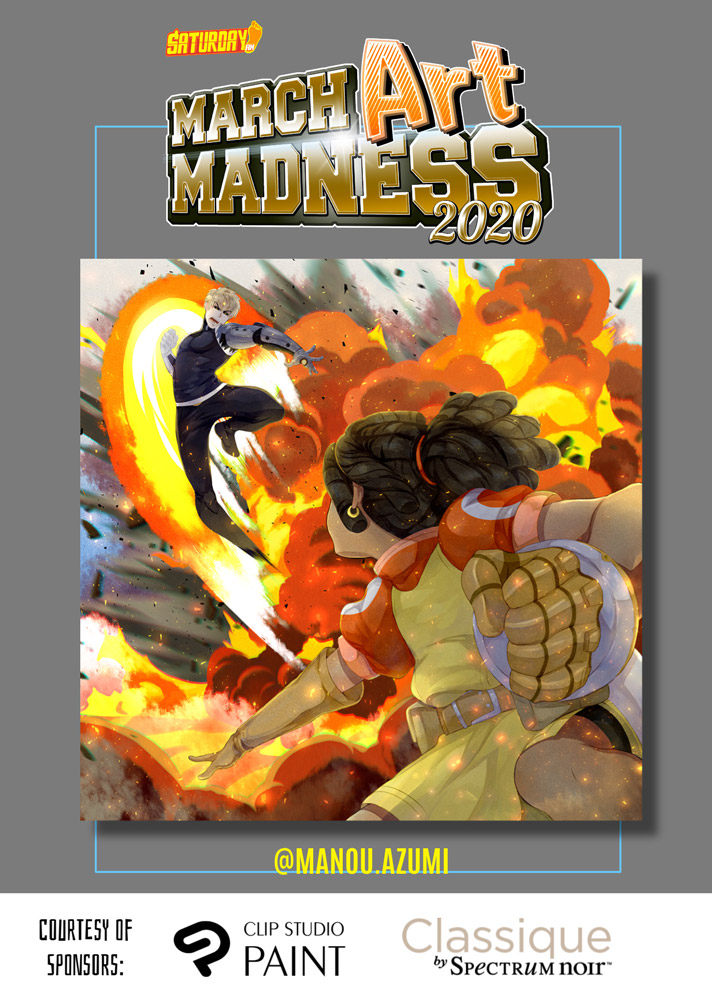
Saturday AM also runs a program called Summer of Manga, one month each year when every issue of Saturday AM features work from a brand-new creator. Plus, those creators get to go through the entire pitching, editing, and marketing process with the Saturday AM team. The talent is incredibly wide-ranging, from a 16-year-old kid from Greece to a 60-year-old woman who created a romance comic.
Within the digital pages of Saturday AM, readers will find more than just incredible manga. Each magazine also includes interviews, features, and other nonfiction content about manga creators. The choice to include these pieces is a very intentional one on Jones’ part, yet another avenue for demolishing preconceived notions as to who can or cannot be a creator.
“It’s important to me to create a platform that is not only elevating the voices of what is traditionally disenfranchised, but to also make sure we’re educating those folks who are giving us their time. … They read that article and they go, ‘That’s like me. I might not be European, I might not be white, I might not be from that sort of background, but I have my own similar challenges and I love comic book art. I want to create it one day.’”
The Best Is Still to Come
Despite a devoted fanbase, solid readership stats (more than a million people on a regular basis!), and ever-expanding opportunities, Saturday AM is still a small company without a major budget. Jones says that getting the word out about the Saturday AM name and platform is one of the greatest struggles he faces.
“That does frustrate me. It frustrates creators, it frustrates staff, it frustrates folks when they feel like they’re doing stuff sometimes in a vacuum, in a void,” he says. “And it’s not. We still reach the audience that we reach, but you want to reach folks outside of that. … All we can do is keep working really hard and trying to do the best product we can. But it will come.”
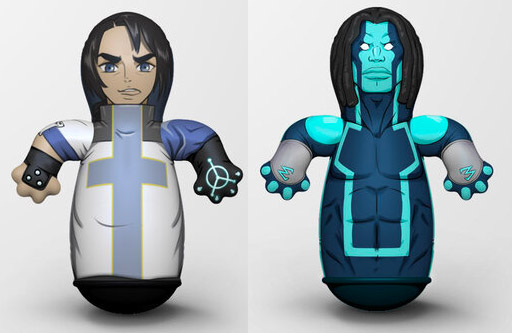
And it seems like it may be coming soon, as Saturday AM has plenty of exciting projects launching in the final stretch of this year. The company recently partnered with a new collectibles company, Jabberwocky Toys, for licensed figures inspired by some of its most popular series, including Apple Black and Massively Multiplayer World of Ghosts. The company also partnered with the ChibiStudio app to create chibi versions of Saturday AM characters.
However, perhaps the biggest news on the horizon for Saturday AM is Super Saturday, a physical magazine that will be available in stores this fall. A major step for this digital-first brand, Super Saturday will feature original, diverse manga content along with resources for fans to create their own art — including a how-to-draw section that is tailored to creating diverse characters.
“Unfortunately, sometimes in comic books and in manga in particular, there’s this idea of creating the most stereotypical visual when it comes to a person of color,” Jones explains. “Asian people have really overly slanted eyes, or Black people have these gigantic lips, and we try to showcase through this section that, no, take it from the creators who are of color themselves and who create this content for us — Here’s how you can present an Arabic character that’s respectful and at the same time distinctive. We’re really excited about that.”
Another thing to be excited about? Super Saturday will feature three all-new comics, one of which is a crossover series featuring characters from multiple Saturday AM titles (yes, Avengers or Justice League style). This, as Jones explains, is incredibly rare in manga, but something he set up very intentionally within the Saturday AM universe.
“You can’t have Dragon Ball fight Naruto, because both of them are so powerful in their own respected series that they could blow up a planet. They could blow up the universe,” he says. “How do you have conflict when you have that? … We actually have an ideology of how all the [Saturday AM] characters can function so that they can all interact with each other in a way that’s respectful.”
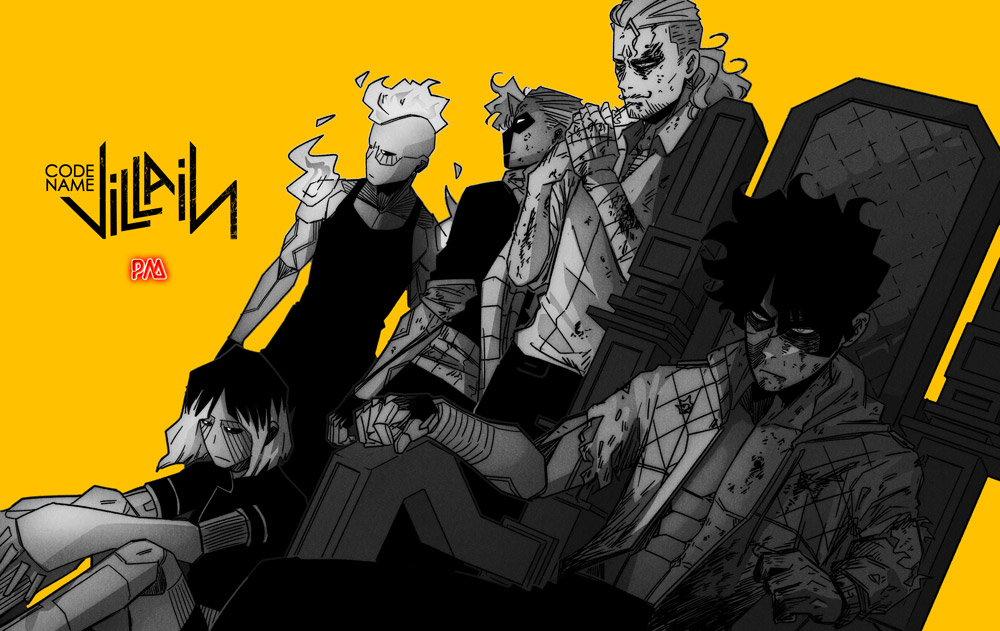
If all of that wasn’t enough, the team behind Saturday AM continues to expand into additional digital, manga magazine offerings. Right now, fans can subscribe to the original Saturday AM (young-adult audience) and/or to Saturday PM, which features more adult content. There are more magazines on the way, too, including the LGBTQ female-oriented Saturday Brunch; a magazine specifically geared toward people who love video games; and a magazine for people who are interested in Black culture.
As Saturday AM continues to grow and expand, diversity continues to be at the forefront of its identity — diversity not just in the characters depicted within the magazine, but also diversity in art, perspective, and experience.
“We’ve accepted the default for so long because we’ve not had a lot of people pushing to make it different. We’re trying to do that and do it for everybody…” Jones says. “Diversity should empower ideas, it shouldn’t be a label of an idea. It should empower new ideas and that’s what we want to see.”
Visit saturday-am.com to learn more and to subscribe to Saturday AM!
